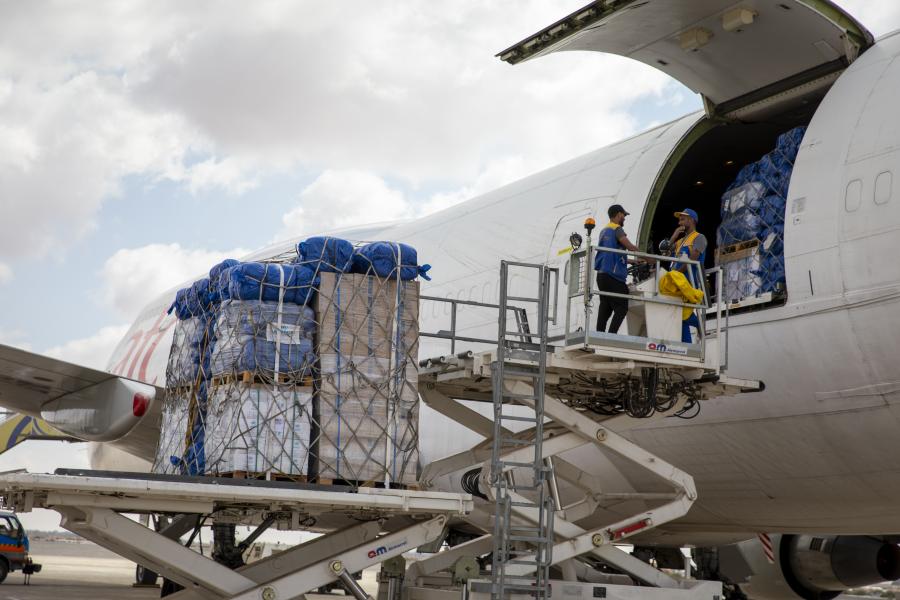Libya comprises over 80,000 IDPs which is more than 60% of the population of concern to UNHCR in the country. The UNHCR's 2023-2025 strategy aims to address the diverse needs of refugees, asylum-seekers, IDPs, returnees, and host communities comprehensively and effectively. Developed through inclusive processes and informed by needs assessments, it focuses on protection, humanitarian assistance, and durable solutions.
Progress has been made in resolving internal displacement, with a significant reduction in IDP numbers due to improved security, although challenges remain. UNHCR will continue supporting IDPs, including those unable to return, through various interventions. The situation for refugees and asylum-seekers remains challenging, given their status as illegal migrants by Libyan authorities. UNHCR will provide essential protection and assistance services, advocate for alternatives to detention, and facilitate access to durable solutions.
Additionally, UNHCR will enhance its emergency response capacity, as demonstrated during recent floods. Aligned with UN frameworks, UNHCR's strategy emphasizes cooperation with other agencies to address key outcomes, including durable solutions for IDPs and effective migration management. Overall, the strategy prioritizes the well-being and rights of vulnerable populations while advocating for their inclusion in social and economic opportunities.
Populations
Population types
Note: The "Stateless" category does not include stateless people who are also in other categories, to avoid double counting. The total number of stateless, across all categories, is .
NB: 2025 figures are planning figures.
Source: UNHCR Refugee Data Finder for years until 2022, UNHCR planning figures (COMPASS) otherwise.
Population by country
NB: 2025 figures are planning figures.
Source: UNHCR Refugee Data Finder for years until 2022, UNHCR planning figures (COMPASS) otherwise.
Population by origin
NB: 2025 figures are planning figures.
Source: UNHCR Refugee Data Finder for years until 2022, UNHCR planning figures (COMPASS) otherwise.
Financials
Budget and expenditure trend
Budget information for the current year is updated monthly, while budget and expenditure information for all other years are final.
Budget by pillar
Budget by objective
Note: The table presents the budget for this operation broken down at the objective level. Resource allocation at the objective level is subject to change during the course of the year as the operational situation evolves and priorities shift. The current budget, reflected in the bottom line of this table, is updated on a monthly basis and is replaced by the final budget at year-end.
Expenditure by Outcome Area
Budget by Impact Area
Source: 2023 budget as approved by the Executive Committee in October 2022.
2022 current budget as approved by the High Commissioner as of October 2022; pending presentation to the ExCom's Standing Committee.
Budget by Outcome and Enabling Areas
Source: 2023 budget as approved by the Executive Committee in October 2022.
2022 current budget as approved by the High Commissioner as of October 2022; pending presentation to the ExCom's Standing Committee.
Budget by Impact Area
Source: 2024 budget and 2023 current budget are taken from the budget document approved by UNHCR's Executive Committee in October 2023.
Budget by Impact Area
Budget information for the current year is updated monthly, while budget and expenditure information for all other years are final.
Budget by Outcome and Enabling Areas
Budget by Outcome and Enabling Areas
Budget information for the current year is updated monthly, while budget and expenditure information for all other years are final.
Budget by Impact Area
Budget by Outcome and Enabling Areas
Strategy
Impact Statements
Latest updates
The boundaries and names shown and the designations used on this map do not imply official endorsement or acceptance by the United Nations.
UNHCR GIS data is publicly accessible in the Operational Data Portal






